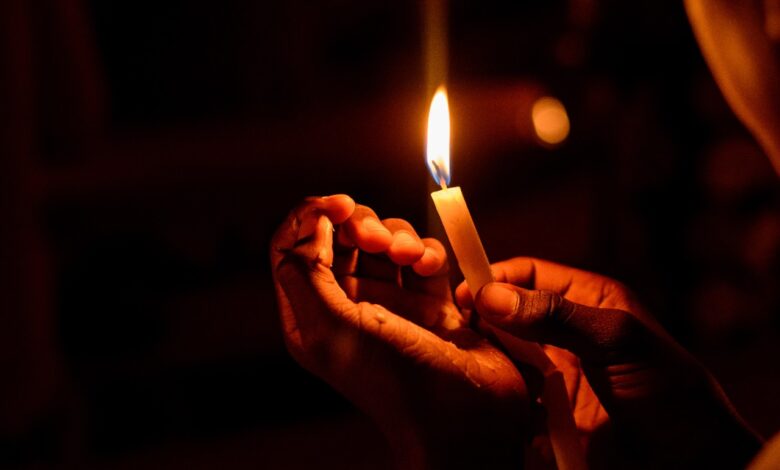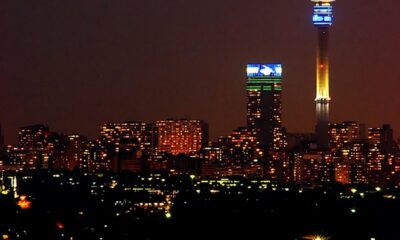411
Gauteng’s Power Puzzles: What Residents Need to Know About Load Reduction vs Load Shedding

Gauteng’s Latest Blackouts Aren’t Load Shedding, But They’ll Still Cut Your Power
Here’s what residents need to know as Eskom rolls out targeted outages across the province
If you live in Gauteng, chances are you’ve spent the last few days preparing for outages again. But before you dust off your candles and gas stoves, there’s something important to understand: this week’s power cuts aren’t load shedding, they’re load reduction.
Confused? You’re not alone. The two terms are often used interchangeably, but they mean different things, are triggered by different problems, and affect different areas in very different ways.
So, let’s break it down in plain language.
What Is Load Shedding, Really?
Most South Africans are painfully familiar with load shedding. It’s Eskom’s nationwide emergency response when the country’s electricity demand outpaces supply.
In simple terms: Eskom can’t generate enough power, so it cuts supply to different parts of the country in scheduled stages (Stage 1 to Stage 8). This prevents a total collapse of the national grid, something that would make even Stage 8 look merciful.
Load shedding is like rationing. Everyone gets less so that the whole system doesn’t crash.
Causes often include:
-
Aging power stations breaking down
-
Coal supply issues
-
Poor maintenance
-
High demand during cold snaps or heatwaves
-
Years of under-investment in energy infrastructure
But here’s the surprising bit: South Africa hasn’t experienced load shedding since May 15, 2025. Eskom says its coal-powered stations are currently stable, with over half performing above 70% energy availability.
Then Why Are We Still in the Dark? Welcome to Load Reduction
While load shedding protects the national grid, load reduction is about protecting local equipment, things like transformers, mini-substations, and distribution cables.
Eskom says load reduction is necessary in high-demand areas, often where illegal connections, electricity theft, or non-payment are rampant. These problems overload the network, risking damage or even fires.
Instead of letting these systems burn out and cause weeks of unscheduled blackouts, Eskom cuts power in short, controlled bursts, usually during peak demand hours (05:00–09:00 and 17:00–22:00). These cuts often last 5 to 6 hours.
Load reduction is targeted, not national. Only specific neighbourhoods are affected, mostly in informal settlements or areas with high levels of non-compliant usage.
But here’s the rub: everyone in the affected area loses power, even those who pay their bills. It’s a blunt tool, but Eskom says it’s the only way to protect infrastructure and keep broader outages at bay.
Why It Matters: The Human Cost of Power Cuts
Load shedding and load reduction both have real-world consequences, but load reduction hits harder in poor communities. These areas are already underserved, and now they’re being asked to shoulder the burden of failing infrastructure, crime, and illegal activity.
And while the goal is protection, many residents feel punished, especially those who pay for electricity but still face blackouts because of others in their area who don’t.
On social media, the reaction has been fierce.
“Why must we suffer because our neighbours are stealing electricity?” one user posted on X (formerly Twitter).
“This isn’t fair. I pay my bill. I get cut off anyway,” another frustrated user wrote.
Eskom’s spokesperson insists that load reduction is a last resort and says efforts are underway to upgrade equipment and crack down on illegal connections. But in communities where trust in service delivery is already low, that promise feels like cold comfort.
What Can You Do?
If you’re in an affected area:
-
Check your local municipality’s alerts, not just national load shedding schedules.
-
Report damaged or overloaded transformers, it could speed up maintenance.
-
Consider joining a community WhatsApp group for real-time updates.
Unfortunately, there’s no load reduction “stage system” and no central schedule, which makes it harder to plan.
For now, Eskom says Gauteng residents should expect continued load reduction until Sunday, particularly during morning and evening peak hours.
Two Problems, One Reality
Whether it’s load shedding or load reduction, the truth remains: South Africa’s energy crisis is far from over. While Eskom may be winning the generation game (for now), its distribution network is under siege, by theft, ageing gear, and sheer demand.
Understanding the difference between these two outages won’t keep your lights on, but it might give you a better grip on why they’re off in the first place.
And if we want to move beyond blackouts, the solution isn’t just about fixing power stations, it’s about fixing the systems, the communities, and the trust that power them.
{Source: IOL}
Follow Joburg ETC on Facebook, Twitter , TikTok and Instagram
For more News in Johannesburg, visit joburgetc.com



























